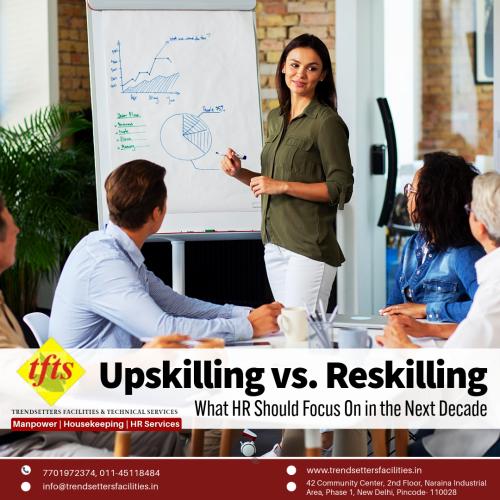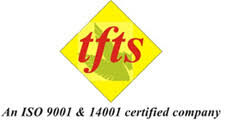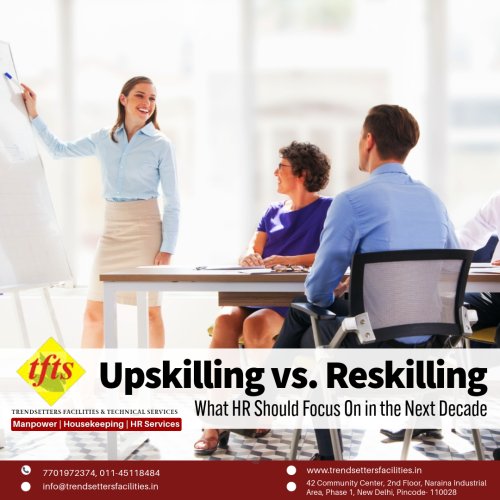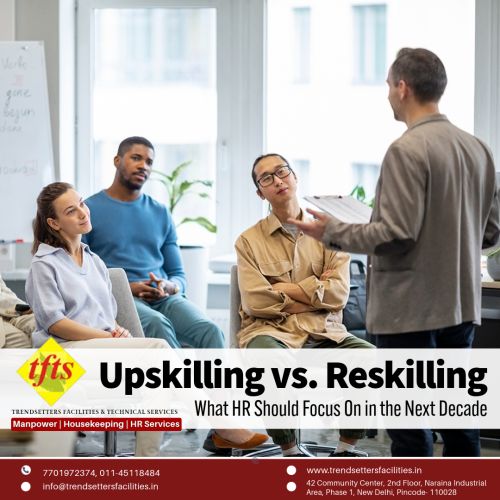
In a tech-driven economy, reskilling and upskilling have become essential for workforce survival. According to recent studies, 85% of employers plan to prioritize upskilling by 2030, while 59% of workers will require new training to remain relevant. The future of work will depend not only on recruiting new talent but also on transforming existing teams to meet evolving business needs.
This article explores what reskilling and upskilling mean, why HR professionals must prioritize them, and how both individuals and organizations can successfully implement them to stay competitive. Shares Trendsetters Facilities & Technical Services (TFTS) India’s top HR outsourcing services company.
What to Understand by Reskilling and Upskilling?
Reskilling is the process of learning new skills for a completely different role. It prepares employees to move into new positions when their current jobs become obsolete or when the organization adopts new business models says Mr. Atul Mahajan, Director of Trendsetters Facilities and Technical Services one of the leading HR outsourcing firm in Delhi NCR.
Upskilling, in contrast, focuses on improving existing skills to perform better in the current role or to take on new responsibilities. It ensures that employees remain effective and adaptable as technologies and expectations evolve.
Both are critical as automation, AI, and digital transformation reshape industries. Organizations that invest in continuous learning not only remain agile but also boost employee confidence, engagement, and career growth.
What are the Key Differences Between Reskilling and Upskilling?
While both aim to future-proof the workforce, their purposes differ. Reskilling prepares employees for career shifts or redeployment, often triggered by role redundancy or business changes. Upskilling, on the other hand, focuses on higher performance or advancement within a current job, typically driven by evolving technology or expectations.
Reskilling usually involves employees in at-risk roles who need new certifications or cross-training, whereas upskilling targets employees who will stay in their roles but need to adapt, often through workshops, on-the-job training, or advanced tools.
Why HR Should Focus on Reskilling and Upskilling?
Addressing Skills Gaps Quickly – As industries transform, skills become outdated fast. HR teams can bridge these gaps through targeted training that helps employees stay aligned with new technologies and business needs.
Strengthening HR’s Strategic Role – When HR drives skill development, it becomes a key partner in achieving business goals. Aligning learning initiatives with organizational strategy enhances performance and supports digital transformation.
Promoting Internal Mobility – Upskilling and reskilling empower employees to grow within the company, reducing the need for external hiring. Promoting from within boosts morale, loyalty, and retention.
Leading by Example – HR professionals themselves must stay ahead. Learning in areas like people analytics, automation, and AI not only sharpens HR’s capabilities but also sets an example, inspiring employees to embrace lifelong learning.
Reducing Recruitment Dependence – Developing internal talent saves both time and cost. It also ensures that employees remain aligned with company culture and values, strengthening organizational continuity.
Challenges HR Must Overcome
While reskilling and upskilling are vital, HR faces obstacles in implementation. Limited time, resources, and funding can hinder progress. Aligning skill-building initiatives with business goals requires collaboration between HR, leadership, and department heads.
Employee resistance is another challenge—some may fear change or undervalue new learning. Effective communication about benefits and career opportunities is essential. Measuring ROI also remains complex, as HR must show tangible results such as improved productivity, lower turnover, and faster role transitions. Lastly, with technology evolving rapidly, training must stay current and engaging to avoid “learning fatigue.”
Practical Applications in the Workplace
Reskilling and upskilling are most successful when applied strategically. For example, a factory worker may retrain as a logistics coordinator by learning digital inventory tools, while a customer support agent can transition to a data analyst role through analytics boot camps.
Meanwhile, upskilling initiatives could include a marketer learning SEO tools, a recruiter mastering data analytics, or a technician using AI-powered diagnostic systems. Each of these examples demonstrates how skill-building drives both individual growth and organizational value.
How HR Professionals Can Reskill and Upskill Themselves
To stay relevant, HR professionals should strengthen core competencies such as:
- People analytics to make data-driven workforce decisions.
- Digital HR tools to streamline processes using HRIS and ATS systems.
- AI and automation for smarter, bias-free hiring and personalized employee experiences.
- Employee experience design to enhance engagement and well-being.
- Change management to lead organizational transformation effectively.
Engaging in certificate programs, peer learning communities, and conferences helps HR stay ahead of trends. Shadowing colleagues in tech-driven roles or collaborating with IT teams offers practical exposure and builds cross-functional expertise.
Steps for Implementing Reskilling and Upskilling Programs
- Conduct a Skills Gap Analysis – Identify current capabilities and future needs.
- Foster a Learning Culture – Encourage self-driven growth and reward development.
- Promote Internal Mobility – Offer job rotations, mentoring, and project-based learning.
- Leverage Learning Platforms – Partner with providers like LinkedIn Learning or Udemy for structured programs.
- Personalize Learning Paths – Align training with employee goals and pace.
- Measure Impact – Track progress using analytics to refine programs continuously.
The Role of AI in Reskilling and Upskilling
With AI reshaping industries, digital literacy, problem-solving, and creative thinking are becoming indispensable. HR must not only master AI-powered tools but also guide employees in developing tech-adjacent and soft skills. Workshops on prompt design, data storytelling, and digital collaboration can prepare teams for AI-integrated workflows.
Reskilling and upskilling are no longer optional—they are strategic imperatives for sustainable growth. By embedding continuous learning into organizational culture, HR can future-proof the workforce, close talent gaps, and enhance adaptability.
In the age of AI and constant change, the most successful organizations will be those that invest in evolving their people—not just their technology.

Trendsetters Facilities & Technical Services (TFTS) is India’s leading manpower & temporary staffing agency for the manufacturing, power, hospitality, automobiles, IT, and Banking sectors. At present TFTS is the leading manpower supplier to Indian SEZs in SIDCUL, Rudrapur, Udhampur, Haridwar, and JAIPUR World. Some of the prestigious TFTS clients are Delhi Metro Rail Corporation, Bajaj Automobiles, Reliance Infrastructure, Haldirams, HCL.
Trendsetters Facilities & Technical Services (TFTS) offers a range of high-quality services from a team of specialized technicians for –
Life Maintenance and Repair
Housekeeping Services for Homes, Offices, Industries, and Institutions.
HR Outsourcing
Payroll outsourcing services
ITI Certified CNC Operators
Certified TIG welders,
Marble polishing services,
Fire hydrant system maintenance and more.
To Get Quotes
Call Us at : 7701972374, 011-45118484
Email: info@trendsettersfacilities.in




